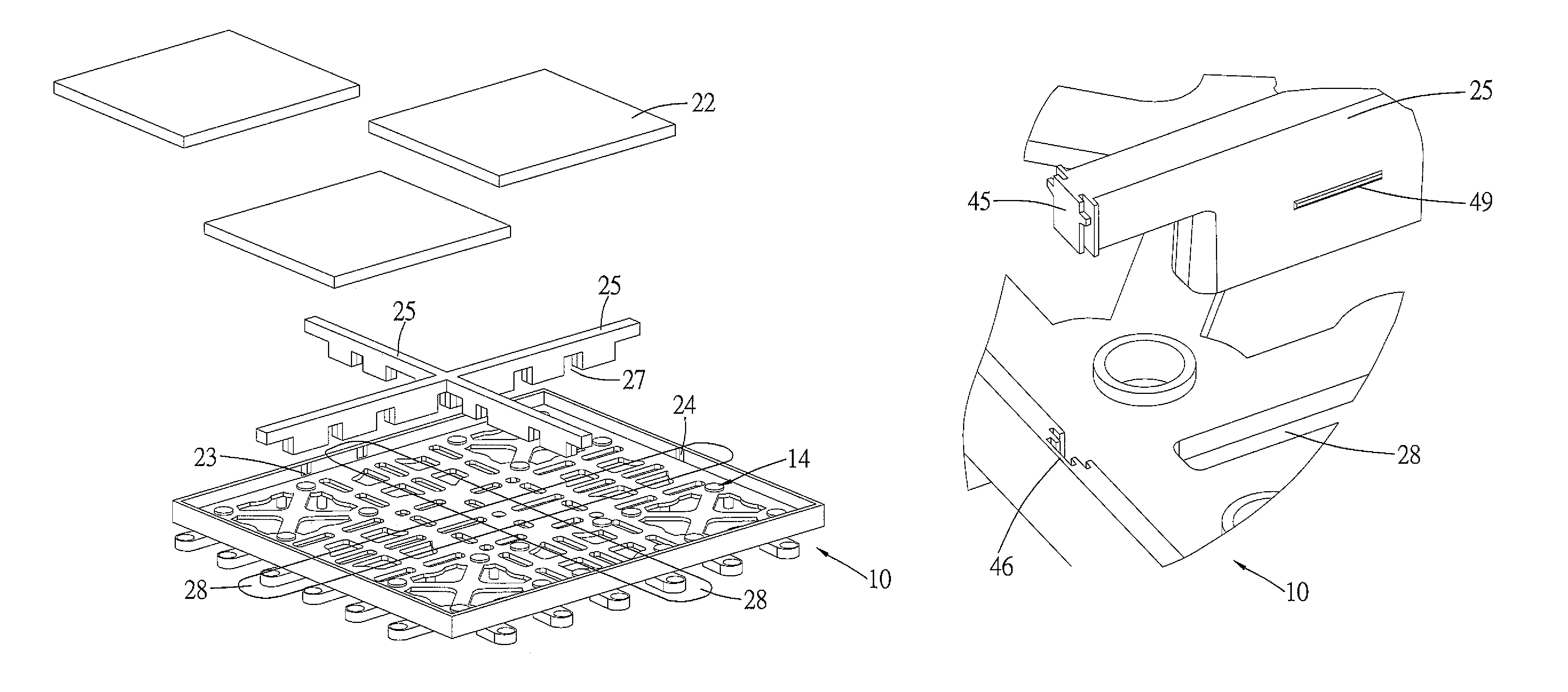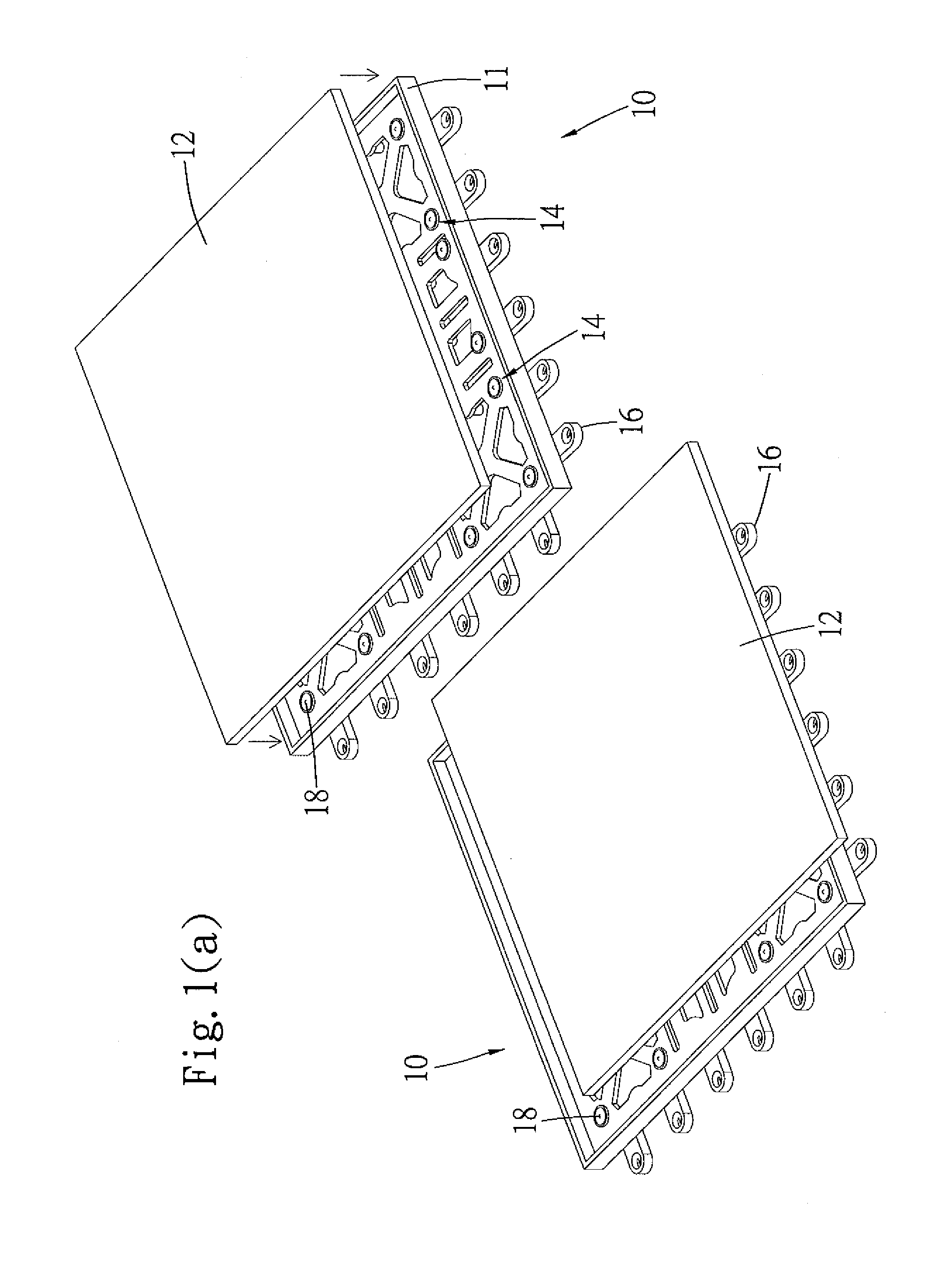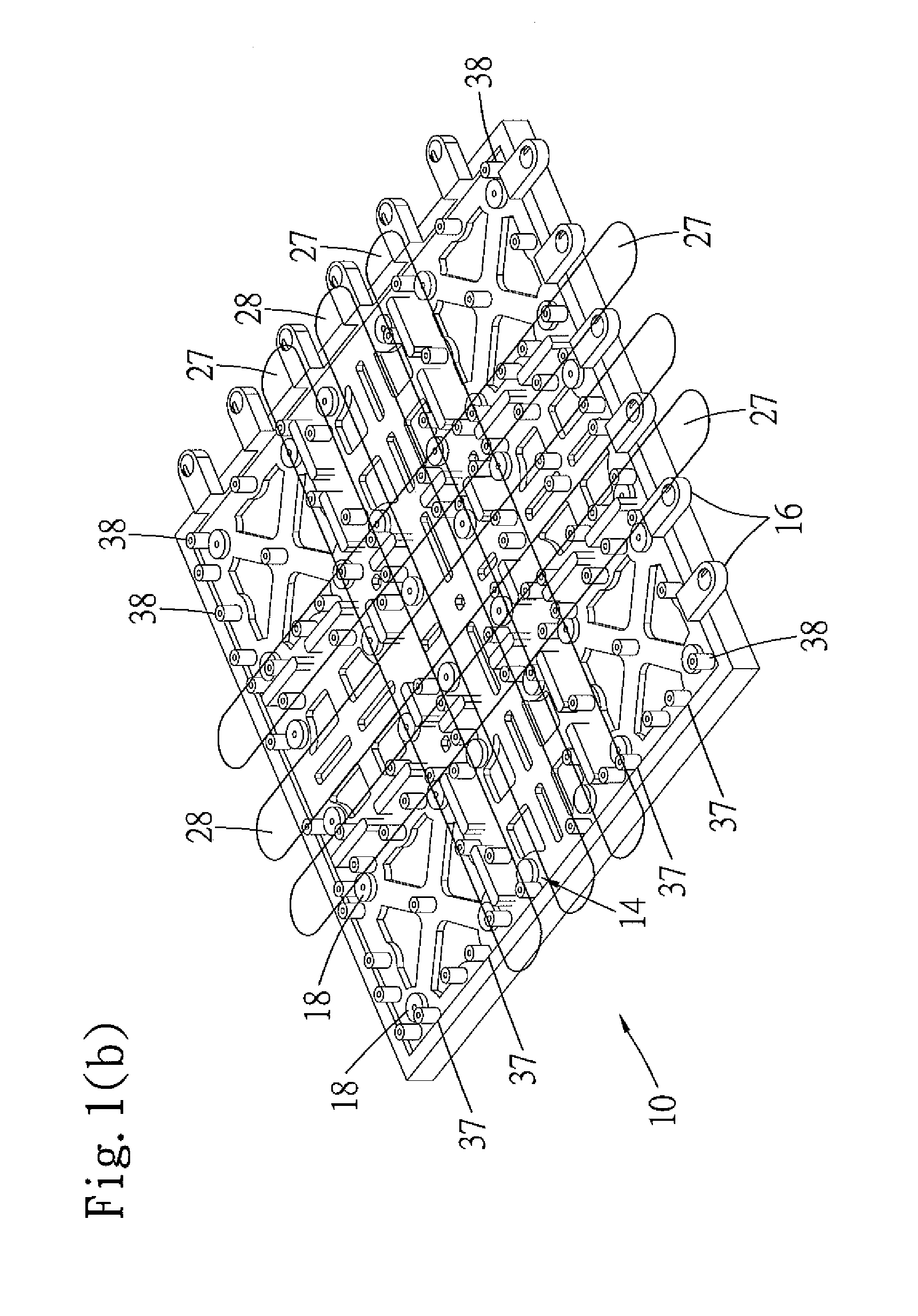Interlocking frame system for floor and wall structures
a technology of interlocking frames and floor and wall structures, applied in the direction of walls, resiliently-mounted floors, flooring, etc., can solve the problems of advan systems, advan systems, and advan systems, and achieve the effect of providing lateral stability to tiles
- Summary
- Abstract
- Description
- Claims
- Application Information
AI Technical Summary
Benefits of technology
Problems solved by technology
Method used
Image
Examples
Embodiment Construction
[0025]An interlocking modular frame system for floor and wall tiles is disclosed.
[0026]Reference is first to FIG. 1 (a), where two modular frames 10 in accordance with the present invention is shown. The frames 10 can be interconnected by coupling the bosses 16 on one edge of one frame to the legs 37 (not shown) underneath the other frame. The frame 10 has a planar member with a raised edge 11 around its perimeter, thus forming a “tray-shaped” structure for supporting the tile 12. Glue holes 14 with overflow are dispersed throughout the surface of the frame 10, which can be filled with adhesive material that will bond to the tile 12 when it is in place. Nail or screw holes 18 may also be provided for attaching the frame 10 to the ground or to the wall, whatever the intended design is. For installation, the frames may be first placed over an area to be covered. Tiles of various designs or dimensions may then be applied to the frames using adhesives.
[0027]As can be appreciated, since ...
PUM
| Property | Measurement | Unit |
|---|---|---|
| perimeter | aaaaa | aaaaa |
| length | aaaaa | aaaaa |
| height | aaaaa | aaaaa |
Abstract
Description
Claims
Application Information
 Login to View More
Login to View More - R&D
- Intellectual Property
- Life Sciences
- Materials
- Tech Scout
- Unparalleled Data Quality
- Higher Quality Content
- 60% Fewer Hallucinations
Browse by: Latest US Patents, China's latest patents, Technical Efficacy Thesaurus, Application Domain, Technology Topic, Popular Technical Reports.
© 2025 PatSnap. All rights reserved.Legal|Privacy policy|Modern Slavery Act Transparency Statement|Sitemap|About US| Contact US: help@patsnap.com



